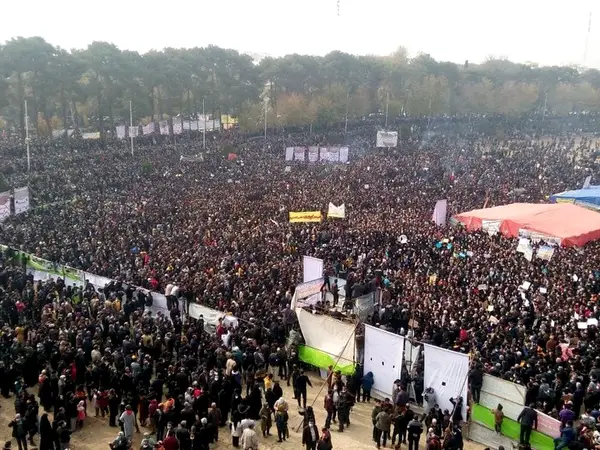Large protests to lack of water by farmers in the central Iranian city of Esfahan, backed by the city’s residents, continued Friday for the second week running.
Thousands of people gathered on the dry bed of the iconic Zayandeh Roud river and on the 400-year-old bridges linking the two parts of Esfahan to demand action by the government. Friday’s protest was one of the largest demonstrations in the city in recent years, coming on the anniversary of the November 2019 bloody protests, which carries the risk of unrest spreading to other cities.
Government-controlled media surprisingly published photos of the protests but tried to say that the event is not a "political protest", and reported that Vice-President Mohammad Mokhber will visit the city on Friday and deliver a speech.
Zayandeh Roud – which starts from the Zagros Mountains, whirls through Esfahan and disappears in wetlands east of the city – has been completely dry most of the year for two decades. Esfahani farmers who have been intermittently protesting since 2017, have camped in the city for nearly two weeks as their livelihood has been destroyed by the dry river.
Although a long-running drought has brought many regions in Iran and in the Middle East to a point of crisis, matters have gotten much worse in Iran where people blame government mismanagement, harmful dam building and politically motivated diversion of rivers have devastated agriculture and drinking water sources.
Iranians who also have to cope with a serious economic crisis and 50-percent inflation rate see government mismanagement as the main reason for all kinds of issues.
Protesters on Friday continued chanting slogans, as they have been doing all along. They chanted "Flowing Zayandeh Roud Is Our Indisputable Right," a play on the slogan "Nuclear Energy Is Our Indisputable Right," often chanted at state-sanctioned rallies. "Give Back Our Zayandeh Roud, Give Back Esfahan Its Breath.”
There has also been land subsidence in the city and at the city airport due to water scarcity. Photos posted to social media show cracks in the ground around the airport, and hollows and cracks in and around Esfahan’s historical buildings and monuments.
This has brought the issue more forcefully to Esfahan’s urban residents who have been upset over the dry river. Every time the authorities allow a little bit of water to flow into the river, people congregate along its banks and celebrate.
In June, water protests erupted in the oil-rich Khuzestan province that ended with the forceful intervention of police and the Revolutionary Guard. More than ten people were killed and hundreds detained.
